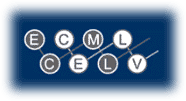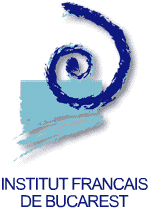
INSTITUT FRANÇAIS DE BUCAREST
ESPACE COURS DE LANGUE
LINGUISTIC COMPETENCE
SELF-ASSESSMENT FOR ADULTS
IN
A DISTANCE EDUCATION PROJECT
Elena Giuroiu

The project "Apprendre le français à distance avec LIBRE ECHANGE" aims to:
- increase and improve adult education opportunities by using a variety of French teaching and learning approaches based on personalized learning and trainee-teachers autonomy,
- offer personalized support (information, orientation, and advice adapted to the learning needs of each adult learner),
- propose a means of recognizing and certifying the learners' linguistic
competence and intercultural experiences.
This product, aimed primarily at adults, can be used in all learning environments from institutional contexts (resource centres, language institutes), to non-institutional "informal" ones (independent learning).
Who is "Apprendre le français à
distance avec LIBRE ECHANGE" intended for?
It is for adults who want to learn French or to expand their linguistic
knowledge. As a result, their objectives can be very different:
- to increase their professional qualifications by acquiring greater linguistic competence as well as an awareness of what they already know (Continuing education),
- to increase their ability to take on an active role in their learning (independent learning),
- to sensitize them to the intercultural aspect of professional education.
What are the objectives of the project?
The aim of the project "Apprendre le français
à distance avec LIBRE ECHANGE" is to promote access
to life-long education for various categories of adults and, as linguistic
competence is one of the components of professional training, to improve
the quality and accessibility of linguistic and profession-related education,.
In order to promote learner autonomy and help the learner identify his/her needs we have designed certain tools:
The Guide to independent learning, to be found at the end of each learning module, is a list of competences which we have termed "indicator".
The tutorial notebook, a list of more general competences, is included
in the chapter "My Progress".
The Indicator
This is a tool to promote learner autonomy. It is a detailed list of competences for the learner to acquire. The learner manages this tool by him/herself, step-by-step, in a very systematic manner.
Embedded in the progress, due to the numerous recycling of activities across the levels, "the indicators" reflect the pedagogical direction proposed in the Common European Framework of Reference for Languages.
At first, "the indicator" allow the learner to acquire the habit of reusing the same learning aids while s/he progresses through the learning process. In doing so, the learner relies on the same references throughout the different stages of learning. Consequently, the learner is able to work through the course in a spiralling manner, progressively building upon what s/he has acquired. From this point, the learner is able to assess what s/he has had difficulty in understanding, organise his/her own system of study, and, if necessary, ask for assistance.My Progress
Once the learner has become accustomed to self-assessment, s/he uses the Tutorial Notebook. With this tool the learner is able to ascertain how to learn a language according to his/her own pace by taking into account what s/he already knows as well as what s/he really wants to learn. The learner chooses what s/he deems to be the most appropriate - and only that - from the available content. In other words, the learner is able to adapt what the course book only offers in a rigid format to his/her personal needs. In order to do this, it is important that the learner be encouraged to use the Tutorial Notebook. This tool is solely the learner`s responsibility.
The section entitled "My Progress" consists of a list of competences related to the Language Biography of the European Language Portfolio. This allows for:
- the learner to compare his / her level of language to an external reference-assessment to be standardized according to the levels set out in the Common European Framework of Reference for Languages
- the establishment of a common vision of linguistic competences (in order to compare competences across various languages
- place value on partial competences
- learners to become aware of how to use the European Language Portfolio
The advantages of these tools:
- simplicity
- effectiveness as learning aids
- flexibility - at the organizational level, for self-study and revision, for increasing learner responsibility.
In using these tools, the learner will learn to:
- organize his/her knowledge by applying various techniques that promote independent learning
- add a European dimension to his/her learning

